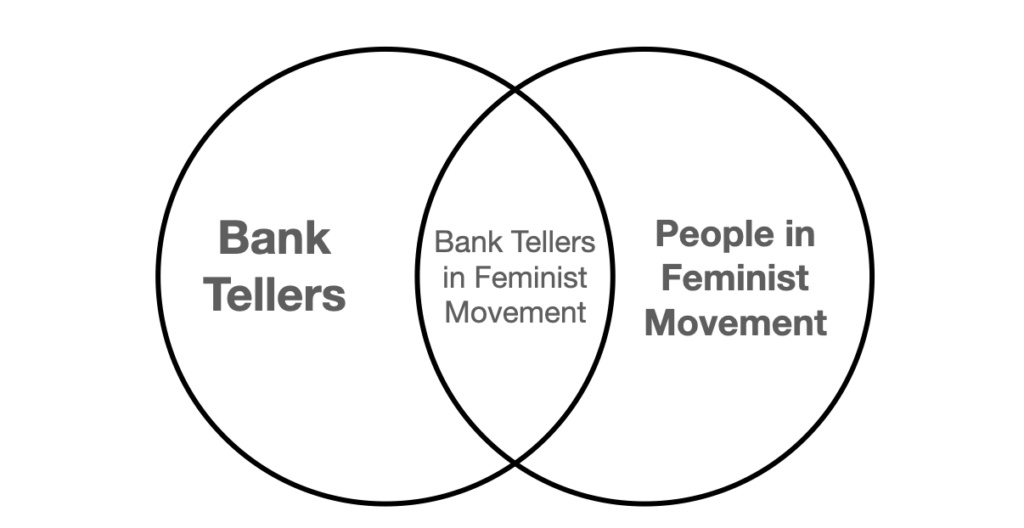Cognitive psychologists Daniel Kahneman and Amos Tversky created a test of people’s tendency to get trapped by the conjunction fallacy. Here’s how the puzzle is presented.
Linda is 31 years old, single, outspoken, and bright. She majored in Philosophy. As a student, she was deeply concerned with issues of discrimination and social justice, and she also participated in anti-nuclear demonstrations.
So, which is more probable?
- Linda is a bank teller.
- Linda is a bank teller and active in the feminist movement.
In the study by Kahneman and Tversky, most people said that number 2 was more probable, but that’s impossible unless all bank tellers are also active in the feminist movement.
Why do people choose wrong?
The fallacy arises because the probability of two events in conjunction is less than either one occurring alone. Take a look at the Venn Diagram below to see a visual representation of this.
The more you know, the more you grow
You can read more here about the conjunction fallacy. Hopefully, you’re better aware of it now and less likely to succumb to it.
But remember: simply being aware of the possibility of committing a thinking error is not enough to prevent you from making the error.
P.S. Get the Smart Lawyers Tech Guide.








